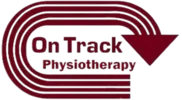Here is what you need to know about your physical therapy to return faster, stronger, and more explosive than ever!
Most likely the ACL surgical process will be performed with one of two methods:
1. Autograft– The surgeon will reconstruct the ACL tear with a segment of your patellar tendon or a graft from your own hamstring.
2. Allograft- The surgeon will reconstruct the ACL tear from a cadaver’s tendon.
Early Stages of Rehab
Establishing full range of motion is imperative after ACL surgery to a successful return to sport. Your physical therapist should be checking this frequently, and you should be working on it constantly. A big part of this stage is restoring basic movement patterns again, such as the ability to squat without off loading your surgical leg. Many people struggle with this without realizing it. If you are just handed a sheet of paper to perform exercises and nobody with a skillful eye watching over you, that’s a problem! The game changer in these early stages are finding a way to actually build muscle. At On Track Physical Therapy, we are the first in the area to start utilizing a technique called blood flow restriction training. This type of training has been proven through research to build muscle with very low loads (using bodyweight only). No other training technique has been shown to do this.
Middle Stages of Rehab
Starting to include single leg activities to restore hip, knee, and ankle control through ground based movements. This is essential, as research has shown that these factors play a very important role in preventing an ACL tear. Also during this stage, your physical therapist should have access to equipment that allows you to start gradually loading the body through true resistance training to stimulate further muscle strength and work capacity. If all that you are doing in therapy is using stretch cords, leg press, a bosu ball, and bodyweight exercises you cannot achieve the strength needed to compete and become injury resistant. Remember you also have 3 other limbs that are not injured, so you can be training these body parts at the same time.
Final Stages of Rehab
Starting to create an environment that is specific to the sport or sports you play. This is extremely important as it will best prepare you for the demands of your sport. Your physical therapist better have a good understanding of the demands an athlete takes while competing. They also need a facility that has the room available to create an environment most conducive to your individualized rehabilitation. This stage should really focus on power output and dynamic exercises. Your therapist should have a way of measuring this capacity and compare it between your surgical side and non surgical side. This information gives you the best summary on if you are truly ready to return to sport.
If you are having ACL surgery or still struggling with regaining full athleticism post surgery, be sure to pick up your free report today. Click on the image below for your FREE download.


About the Author: Dr. Greg Schaible is a physical therapist and strength coach specializing in athletic performance. He attended The University of Findlay as a student athlete. As an athlete he competed in both Indoor and Outdoor Track & Field where he earned honors as a 5x Division II All-American and 6x Division II Academic All-American. In 2013 he completed Graduate School earning his Doctorate of Physical Therapy (DPT). Greg is the owner of On Track Physical Therapy in Ann Arbor, Mi. Follow On Track PT and Performance on Facebook.



